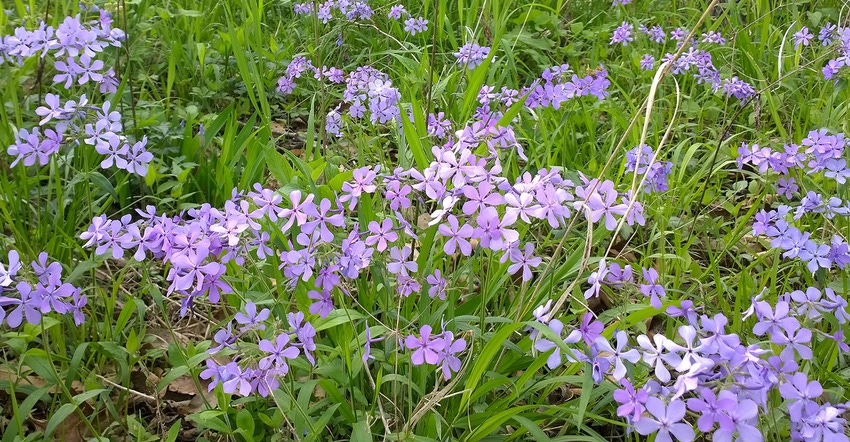April 30, 2021

Aromas forge strong memories. Take my first encounter with a fragrant native plant — garden phlox. In high school, I remember walking down the sidewalk, approaching masses of pink and white flowers growing along a picket fence, generating distinctive sweet summer smells.
The fragrance was so intoxicating that I think of that 40-year-old memory every summer when phlox is in bloom.
Garden phlox cultivars are prolific and common in garden centers. But the native straight species is not. Unfortunately, the world of horticulture has overlooked one of nature’s greatest gifts. As a straight species, this phlox is reasonably powdery mildew free, as opposed to the many cultivars that perform so poorly in the humid lower Midwest.
Basics of garden phlox
Garden phlox grows in part shade to full sun, in poorly drained moist soils, or in well-drained dry areas in the garden. Its greatest strength is in its ability to colonize strongly on difficult-to-mow shady slopes and complement other strong-performing species such as creek oats, smoothcone sedge, rough goldenrod, false sunflower, woodland knotweed, curlytop ironweed, yellow wingstem, obedient plant and Joe Pye weed.
It has the potential to spread from seed and underground rhizomes. Individual seedlings may be clump-forming or suckering, so we look for clump formers and transplant them to the more formal section of the garden. Because birds don’t eat many of the seeds, we deadhead plants growing in the garden when they are finished blooming.
Although each phlox species varies widely in vigor, soil and sunlight requirements, they have one thing in common. They are all pleasant on the nose.
Types of garden phlox
There are five common garden phlox species that thrive in Missouri:
1. Wild sweet William. These prefer well-drained soils in the shade, and many of our garden soils are heavy clay, with less-than-perfect drainage. My favorite companion plants include yellow honeysuckle, flowering dogwood, round-leaved groundsel, wild columbine, sweet Cicely and celandine poppy.
2. Sand phlox. This blooms in March and April, with light blue flowers (or lavender) and gold stamens. It doesn’t need sandy soil to grow well, but it does prefer full sun and good drainage. Ours perform nicely in well-drained, average garden soil. Sand phlox makes a great addition to the top of a retaining wall and between boulders and receives an aggressive rating of 1. It also works well in container gardens. Sand phlox blooms in early spring and combines well with rose verbena and prairie pussytoes.

PRETTY PAIR: Garden phlox planted alongside snow-on-the-mountain create a colorful and textured garden pathway.
3. Downy phlox. These require well-drained soils in full sun to part shade. It works well in rock gardens and the edge of a sidewalk or driveway, because it grows wild in rocky areas. It blooms in midspring along with fire pink, western wallflower and fringed bluestar. Downy phlox is a short-lived perennial that comes up in new places from seed, scoring a 3 on the aggressive scale. It will not be weedy, and the extra seedlings are always welcome in our garden. Its close relative, Ozark phlox, tolerates a much wider array of soil conditions and is a better choice for most garden soils that have more clay and part shade.
4. Meadow phlox. This is a close relative to garden phlox, similar in size and shape, but has purple speckles on the stem and grows in wetlands. It is a good choice for sunny, wet gardens because it is much less aggressive (a 3).
5. Smooth phlox. This is another wet-tolerant species, which is a shortened version of meadow phlox, but with bright pink flowers and an aggression factor of 1 or 2. Both meadow and smooth species are especially useful in rain gardens and wet gardens in full sun or part shade. Stems of smooth phlox may flop over, so plant it next to companions such as swamp milkweed, palm sedge and hop sedge.
My whole life, I’ve been enchanted by the unique and irresistible aroma of phlox, and many other aromatic plants. I encourage you to try them as well. Happy gardening!
Woodbury is the horticulturist and curator of the Whitmire Wildflower Garden at Shaw Nature Reserve in Gray Summit, Mo. He also is an adviser to the Missouri Prairie Foundation’s Grow Native! program.
About the Author(s)
You May Also Like




